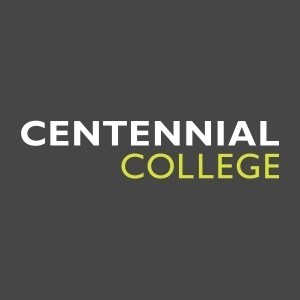The Indian Fine Arts program draws upon the artistic heritage of thousands of years of First Nations and Inuit history. Its focus is on Indigenous contemporary and traditional art.Beyond art, students improve their skills in communication through writing, analytical thinking in the social and natural sciences, analytical thinking in culture and society, and research skills and methodologies. The faculty have expertise in traditional First Nations art, as well as contemporary aesthetics. The department houses a two-dimensional teaching room, a three-dimensional teaching room, and a traditional teaching room. Throughout this program, students will submit samples of their work to the faculty for the purpose of review and evaluation. Also, with an in-house art studio and art gallery, students have the opportunity to display their art for numerous audiences to view.
Field of study: Aboriginal Studies, Art History, Criticism and Conservation
The Indian Art History program at the First Nations University of Canada offers students a comprehensive exploration of the rich visual traditions, cultural expressions, and artistic practices of Indigenous peoples across North America. Designed to foster a deep understanding of the historical and contemporary significance of Indigenous art, this program provides an interdisciplinary approach that combines elements of anthropology, history, cultural studies, and art theory. Students will engage with a wide range of art forms including traditional beadwork, pottery, carving, textile arts, and contemporary artistic expressions created by Indigenous artists today. The curriculum emphasizes critical analysis of artworks within their social, spiritual, and political contexts, encouraging students to appreciate the ways in which Indigenous communities use art as a form of identity, resistance, and cultural revival.
Throughout the program, students will learn about the history of Indigenous art, examining its evolution through different periods and regions, and understanding the influences of colonialism, globalization, and Indigenous resilience. The program includes courses on the symbolism, techniques, and storytelling aspects of Indigenous art, as well as field trips and opportunities to visit museums and cultural sites to enhance practical learning. Faculty members are experts in their fields, offering mentorship and facilitating research projects that allow students to delve into specific areas of interest, such as Plains art, Pacific Northwest art, or Eastern woodland traditions.
Graduates of this program will be equipped with critical skills in art analysis, cultural interpretation, and research methodologies relevant to Indigenous art and history. They will be prepared for careers in museum curation, cultural management, academic research, art education, and community development. The program also aims to promote awareness and appreciation of Indigenous artistic heritage, fostering respect for Indigenous perspectives in broader cultural and academic communities. By integrating traditional knowledge with contemporary artistic practices, the Indian Art History program at the First Nations University of Canada prepares students to become informed advocates and custodians of Indigenous cultural heritage.
Program requirements for the Indian Art History degree at the First Nations University of Canada include a combination of foundational courses, advanced seminars, and practical experiences designed to equip students with comprehensive knowledge of Indigenous art traditions and their historical contexts. Students are typically required to complete core courses such as Introduction to Indian Art History, Indigenous Art and Cultural Expression, and Methods in Art Historical Research. These foundational courses establish a strong understanding of the aesthetic, cultural, and symbolic aspects of Indigenous art forms across various regions and time periods.
In addition to core coursework, students must engage in specialized electives that explore topics such as Contemporary Indigenous Art, Museum Studies, and Art Conservation. These electives allow students to develop a nuanced perspective on current trends and professional practices in the field. To gain practical experience, students are encouraged to participate in internships with museums, galleries, or Indigenous cultural organizations, contributing to exhibitions, conservation projects, or community outreach programs.
Graduate students pursuing research-oriented tracks are expected to complete a comprehensive thesis that involves original research, critical analysis, and engagement with Indigenous communities. The program emphasizes rigorous research methodologies, cultural sensitivity, and ethical considerations associated with studying Indigenous art. Mandatory seminars include discussions on decolonizing art history, intellectual property rights concerning Indigenous artworks, and the role of art in Indigenous identity and sovereignty.
Students are also required to attend relevant workshops, lectures, and conferences throughout the duration of the program to stay current with developments in the field and to network with scholars and practitioners. To graduate, students must achieve a minimum GPA as specified by the university, complete all coursework, and, where applicable, submit a thesis or capstone project demonstrating mastery of the subject matter. Overall, the program aims to foster a deep appreciation for Indigenous artistic traditions and prepare graduates for careers in academia, curation, education, or community-based cultural initiatives.
Want to improve your English level for admission?
Prepare for the program requirements with English Online by the British Council.
- ✔️ Flexible study schedule
- ✔️ Experienced teachers
- ✔️ Certificate upon completion
📘 Recommended for students with an IELTS level of 6.0 or below.
The Indian Art History program at the First Nations University of Canada offers a variety of financing options to support students throughout their academic journey. Prospective students are encouraged to explore scholarships, grants, and bursaries specifically available for Indigenous students, which aim to promote access and equity in higher education. The university provides information on both internal and external funding opportunities, including federal and provincial government programs, Indigenous-specific scholarships, and private sector grants. Students are advised to apply early and regularly check the university’s financial aid office for updates on new funding sources. Additionally, some students may be eligible for student loans provided by the Canadian government, which can be used to finance tuition fees, living expenses, and other educational costs. The university’s financial aid office offers personalized guidance to help students navigate the application process, understand eligibility criteria, and assemble necessary documentation. It is also beneficial for students to consider part-time employment opportunities on campus, which can help offset costs while gaining valuable experience. The program's curriculum and structure are designed to be flexible, accommodating students who may need to work while studying, thus making education more accessible. International students, if applicable, should explore specific scholarships and funding options targeted at non-Canadian residents interested in Indian Art History. The university’s commitment to supporting Indigenous scholars is reflected in dedicated funding streams that aim to reduce financial barriers. Overall, students should actively seek out and apply for multiple funding sources to ensure comprehensive financial coverage for their studies. The Indiana Art History program at First Nations University of Canada strives to make education affordable and accessible, recognizing the importance of cultural and academic development for Indigenous communities.
The Indian Art History program at the First Nations University of Canada offers a comprehensive exploration of the rich artistic traditions and cultural expressions of Indigenous peoples in North America, with a particular focus on the diverse art forms developed by First Nations communities. This program aims to provide students with a deep understanding of the historical, cultural, and social contexts that have shaped Indigenous art practices over centuries. Through a combination of theoretical coursework and practical engagement, students are exposed to a variety of artistic mediums, including traditional beadwork, quillwork, pottery, painting, sculpture, and textile arts. The curriculum emphasizes the importance of Indigenous perspectives and methodologies in art history, fostering an appreciation for the cultural significance of art objects and practices within their communities.
Students in the program will study the evolution of Indigenous art in relation to historical events, such as colonization, resistance movements, and contemporary cultural revival efforts. The program also explores the role of art in identity formation, spiritual beliefs, and political activism among Indigenous peoples. Faculty members are experts in the field of Indigenous art history, often engaging in ongoing research and community collaboration, which enriches the learning experience. The program encourages students to develop critical thinking skills and cultural sensitivity, preparing them for careers in museums, galleries, cultural organizations, academia, or community arts programs.
Fieldwork, internships, and community-based projects are integral components of the program, allowing students to gain firsthand experience and build connections within Indigenous arts communities. Additionally, the program promotes the preservation and revitalization of Indigenous arts, supporting initiatives that serve to sustain traditional techniques and promote Indigenous cultural sovereignty. Graduates of the Indian Art History program will leave equipped with a profound knowledge of Indigenous artistic traditions and the ability to critically analyze and interpret Indigenous art within broader historical and contemporary contexts. Overall, this program is designed to foster respect and understanding of Indigenous cultures through the lens of their artistic expressions and to contribute meaningfully to the recognition and elevation of Indigenous art on national and international stages.




